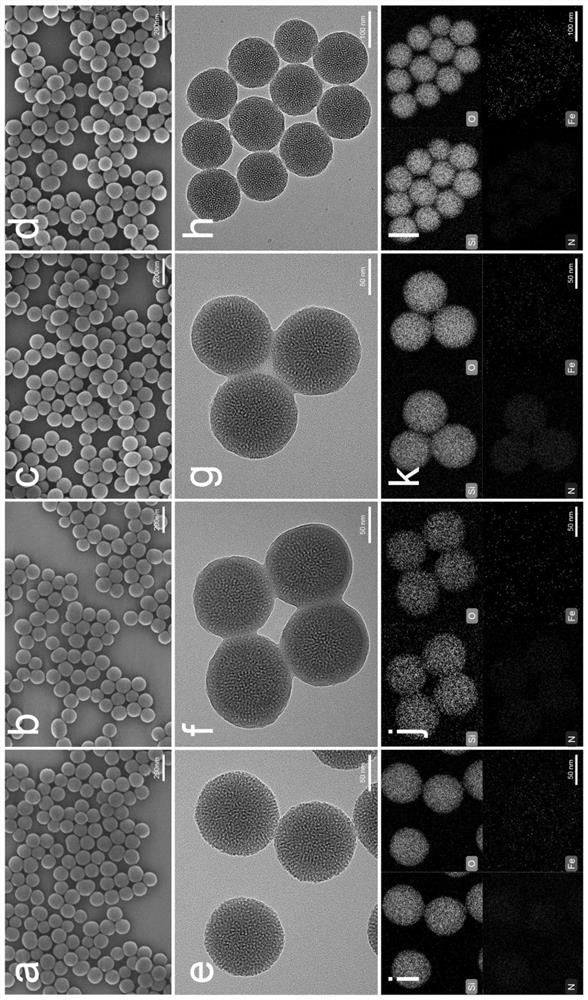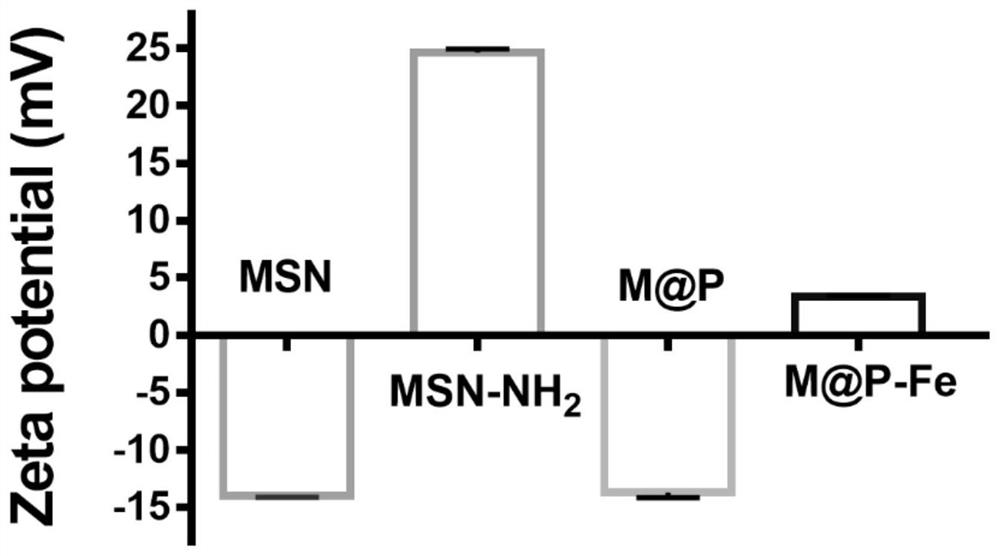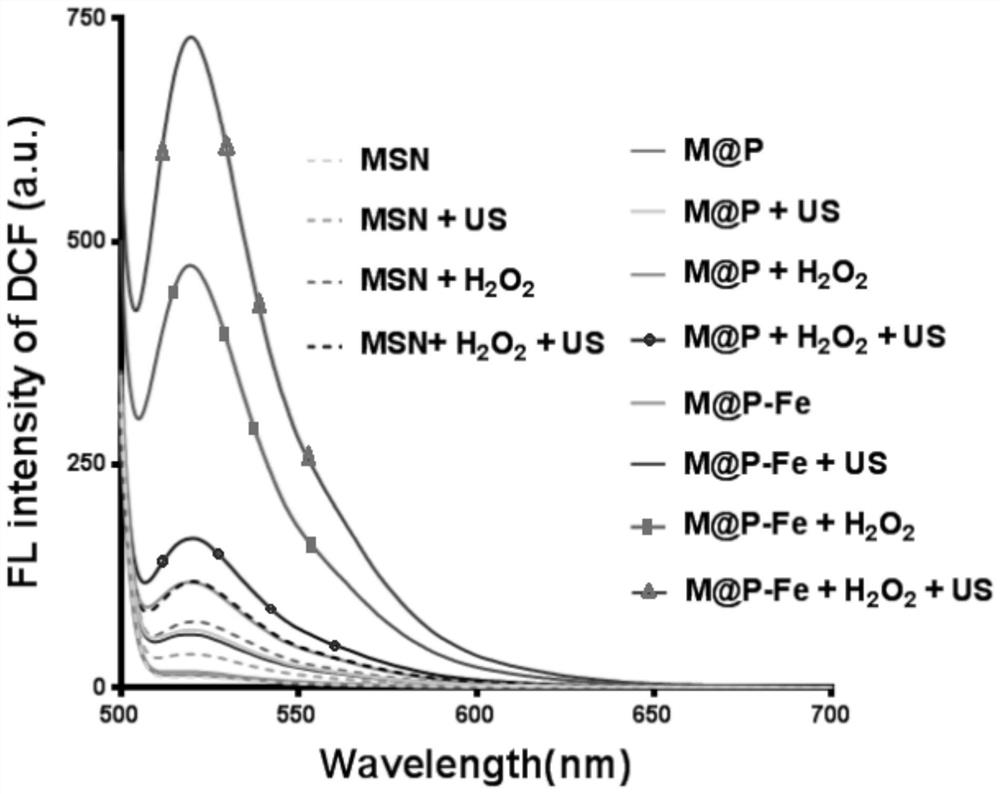A kind of composite nanomaterial with antibacterial effect and its preparation method and application
A composite nanomaterial and nanomaterial technology, which is applied in the field of composite nanomaterials and its preparation for removing root canal bacteria in teeth, can solve problems that have not been reported, and achieve good results, easy control of process parameters, and stable performance
- Summary
- Abstract
- Description
- Claims
- Application Information
AI Technical Summary
Problems solved by technology
Method used
Image
Examples
Embodiment
[0045] Embodiment. Preparation and characterization of antibacterial material
[0046] 1. Preparation of antibacterial materials
[0047] The preparation method of the mesoporous silicon composite material loaded with protoporphyrin and ferric chloride described in this embodiment comprises the following steps:
[0048] (1) Synthesis of nano-mesoporous silicon carrier: Dissolve 10 g of cetyltrimethylammonium chloride (CTAC) and 0.4 g of triethanolamine (TEA) in 100 mL of deionized water, and stir vigorously at 95 ° C for 1 h , and then slowly and uniformly dropwise added 7.5mL Tetraethyl orthosilicate (TEOS) and then stirred for 1h, and the resulting solution was centrifuged at 11000rpm for 30 minutes to collect the precipitate, which was washed several times with deionized water and methanol. The resulting precipitate was mixed with concentrated hydrochloric acid, vigorously stirred at 60 °C under reflux for 48 hours to remove the template CTAC, and then obtain mesoporous si...
experiment example
[0055] Experimental example. Material performance test
[0056] 1. ROS production efficiency test
[0057] The non-fluorescent 2,7-dichlorofluorescein diacetate (DCFH-DA) was used as a fluorescent probe to detect the ROS generation of the synthesized materials. Dissolve 0.1 mg of the prepared MSN, M@P and M@P-Fe in 1 mL of deionized water or 0.01% V / VH 2 o 2 , and then 20uL of DCFH-DA was added, and the samples of the ultrasound group (US) were exposed to ultrasound conditions (1MHz, 0.5W / cm 2 , after a duration of 3min), use a fluorometer to detect the fluorescence intensity of DCF under excitation at a wavelength of 488nm, and the detection results are as follows Figure 3-4 As shown, for easy identification, Figure 4 for image 3 Partial zoom-in.
[0058] Figure 3-4 Among them, the order of fluorescence intensity peaks from high to low is: M@P-Fe+H 2 o 2 +US, M@P-Fe+H 2 o 2 、M@P+H 2 o 2 +US、MSN+H 2 o 2 +US、M@P+H 2 o 2 、MSN+H 2 o 2 , M@P+US, M@P-Fe+US, M...
PUM
 Login to View More
Login to View More Abstract
Description
Claims
Application Information
 Login to View More
Login to View More - R&D
- Intellectual Property
- Life Sciences
- Materials
- Tech Scout
- Unparalleled Data Quality
- Higher Quality Content
- 60% Fewer Hallucinations
Browse by: Latest US Patents, China's latest patents, Technical Efficacy Thesaurus, Application Domain, Technology Topic, Popular Technical Reports.
© 2025 PatSnap. All rights reserved.Legal|Privacy policy|Modern Slavery Act Transparency Statement|Sitemap|About US| Contact US: help@patsnap.com



